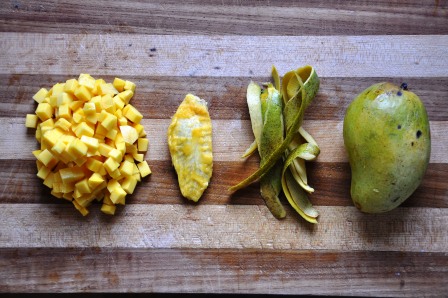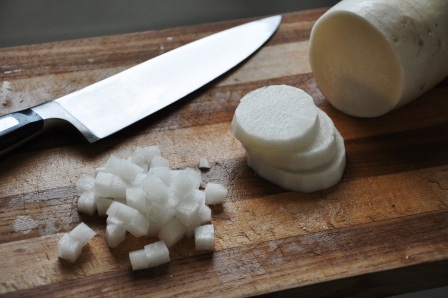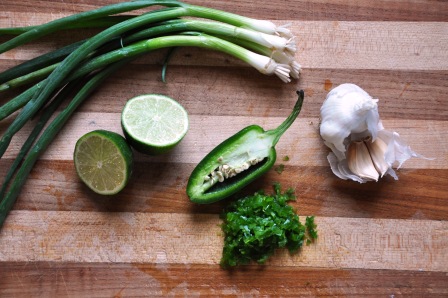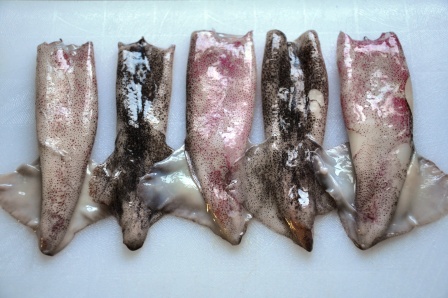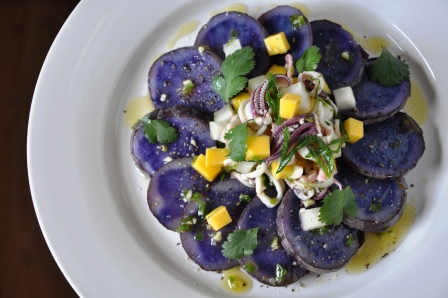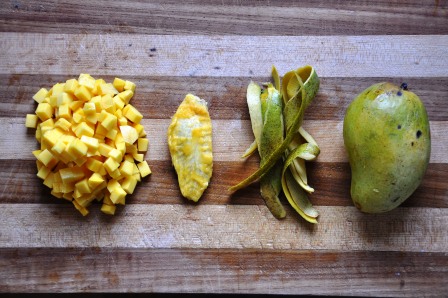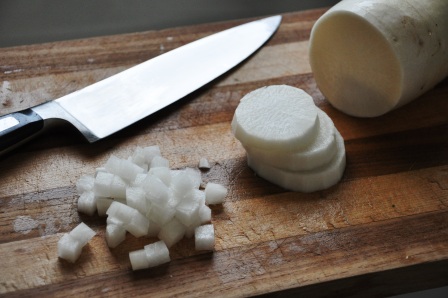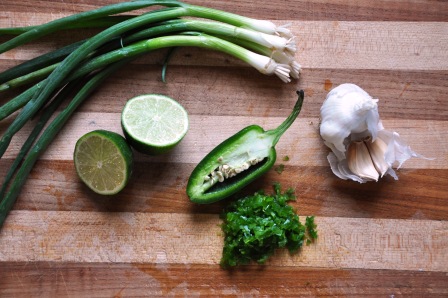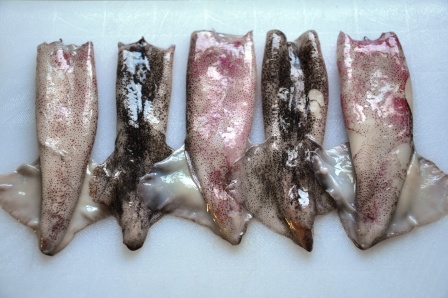Last weekend while dining on mango fried rice, lamb curry and other Malaysian specialties with some friends, someone brought up how difficult mangoes are. Do you peel them first? How do you know where the pit is? What angle will it be at? What do you do when they are too ripe and squish everywhere? Mangoes are like pomegranates; Americans are fascinated with them, but haven’t quite gotten the hang of preparing them yet.
For this reason, (and because mangoes are one of my favorite fruits of all time) I have selected the mango as March’s Seasonal Seattleite feature. But not just any mango, specifically the Ataulfo mango, also known as honey, Champagne, baby, yellow, manila, Adaulfo, or Adolfo mango. In the Northwest (and I suspect the rest of the US), these mangoes are available from March through July, arriving from our southerly neighbors in Mexico, although the cultivar has been grown in India and Asia for thousands of years. But why this mango?
I consider the Ataulfo mango to be superior to the more common Tommy Atkins mango for several reasons: the Ataulfo mango has thinner skin and a smaller pit, is sweeter and more concentrated in flavor and has buttery smooth flesh. The Tommy Atkins cultivar is more widely available in the US due to its disease resistance and transportability, but its flavor is pale in comparison to the Ataulfo; it also has a larger pit, thicker skin and very fibrous flesh.
So we’ve tackled the type of mango, but what about cutting it? With firmer, less ripe specimens I find they can easily be peeled with a vegetable peeler, and then the flesh can be cut away from the pit and diced, sliced, etc. If the mango is super ripe, then you can cut the flesh away from the pit, and then scoop it from the skin with a spoon (like you would an avocado). How do you know where the pit is? The pit is in the middle of the mango and is thin and wide, so cut each of the flat sides from the pit first, then go back and cut away the flesh from the narrow sides. With practice, you will easily be able to guesstimate where the pit is.
The Ataulfo mango is so delicious that I usually barely get it peeled before I start gnawing at the sweet-tart fruit. However, today I was able to combine it with some creamy purple potatoes, sweet calamari, crisp daikon, and garlicky, jalapeño vinaigrette before wolfing it down. This salad may seem like it has a lot going on (oh wait, it does) but all the ingredients play so nicely together. It’s a symphony of bright flavors and contrasting textures; from soft and starchy, slippery and chewy, to crunchy and fresh.
Enough of the mysterious mango misunderstandings, it’s time to enjoy March’s bounty.
Purple Potatoes with Mango & Calamari
This salad tastes best at room temperature and all the components (potatoes, calamari, vinaigrette, and vegetables) can be prepared and stored separately, then composed right before serving. This would make a perfect lunch or appetizer in the spring and summer. Use mangoes that are ripe but still firm, so they will retain their shape when diced. You can remove the seeds from the jalapeños if you don’t want the salad to be as spicy. Also, if you can’t find purple potatoes you can substitute red bliss or yukon gold and instead of daikon radish you could use jicama.
Cook the potatoes. Place the whole potatoes in a medium saucepan, cover with cold water and bring to a boil. Reduce the heat to low and cook for 15-17 minutes, until the potatoes are tender when pierced with a knife. Drain the potatoes then set aside to cool.
Cook the calamari. Bring a medium pot of salted water to a simmer. Meanwhile, fill a bowl with ice water. To clean the calamari, grasp the head and firmly twist it off from the body, squeeze out any innards, pull the long cartilage piece out, then peel off the spotted outer skin. Rinse the bodies inside and out and cut into thin rings. Cut the tentacles from the heads, discarding the cartilage-like beak. Cut the tentacles into small sections, rinse, and place with the rings. Poach the calamari in the salted water for 1 minute, then remove with a slotted spoon to the ice water, then remove the cooked calamari to a small bowl and set aside.
Make the vinaigrette. Mix the garlic, jalapeño, oil, lime juice and zest together in a small bowl and allow to marinate for 15 minutes.
Assemble the salad. Cut the potatoes into ¼ inch slices and arrange on a platter or individual plates. Spoon a couple tablespoons of the vinaigrette over the potatoes as well as salt and pepper to taste. In a bowl, mix the calamari, mango, daikon, scallions, and remaining vinaigrette. Taste the mixture for seasoning, adding more lime juice, salt, or pepper if necessary. Spoon the calamari mixture onto the potatoes, drizzling with vinaigrette around the plate. Garnish with the cilantro leaves and serve immediately.
